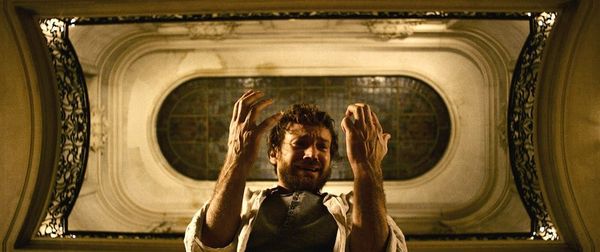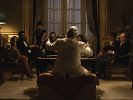Eye For Film >> Movies >> Benavidez's Case (2016) Film Review
Benavidez's Case
Reviewed by: Jennie Kermode

From Joris-Karl Huysmans to Milos Forman, artists exploring the subject of art have always struggled with issues arising from their own function as creative agents, like Stephen Hawking fretting (once upon a time) that one might never understand the universe from the inside. Laura Casabé's bold second feature tackles this head on. It opens with carefully framed scenes, reminiscent of David Lynch's careful staging, boxed within the screen. The eponymous Benavidez (Guillermo Pfening) moves from one box to another, gradually coming to suspect that they're designed for him. It is inside another - that suitcase - that his doom resides.
The case here is a pun, of course - a happy accident of translation - for Benavidez is also a psychiatric patient. He arrives late one night at the residence of his therapist (Jorge Marrale), begging for help. The therapist doesn't much care to indulge him - until he sees what's inside the case. For the therapist is also an art dealer, and one who has been struggling of late as the patients whose skills he cultivates fail to go as far as he needs. Benavidez is the son of a famous painter and has a talented wife (Paula Brasca), but he has never shown any kind of talent himself. Until now.

Adapting her elegantly short film from the short story by Samanta Schweblin, Casabé makes use of the meta-layers alongside the layers of plot, simultaneously satirising the way in which the art world can redefine the simplest things through convolution. At the heart of it is a vulnerable man desperately trying to understand himself, though he may come to find that he was happier before he did - and a therapist who is another kind of madman, bent on exploiting his talent and caught, anyway, between the duty to reconnect his patient with the real world and the duty to make him whole. It is on these tensions - and related moral questions - that the film's focus lies, with potentially shocking revelations deftly downplayed lest they distract us from the point.
Working with a tightly restricted budget, Casabé has created a film that looks magnificent, with superb set dressing and costuming, and the presence of nationally esteemed actors like Marrale adds to its class. The practical struggles show in the limited locations and rushed nature of some sequences, particularly Benavidez's time with a labyrinth, which suggest that the editor had too little footage to work with. The labyrinth scenes are salvaged, however, by some nice CGI work (for once put to good use), and by the quality of the artworks found there, which bear testimony to the years of hard work that have gone into this film.
Though it may not quite achieve its goals, this is a tough little film which punches above its weight. Pfening's exposed performance and a spirited turn from Brasca give it the human quality, the fragility that all art needs to speak with a voice of ts own.
Reviewed on: 14 Aug 2016
















